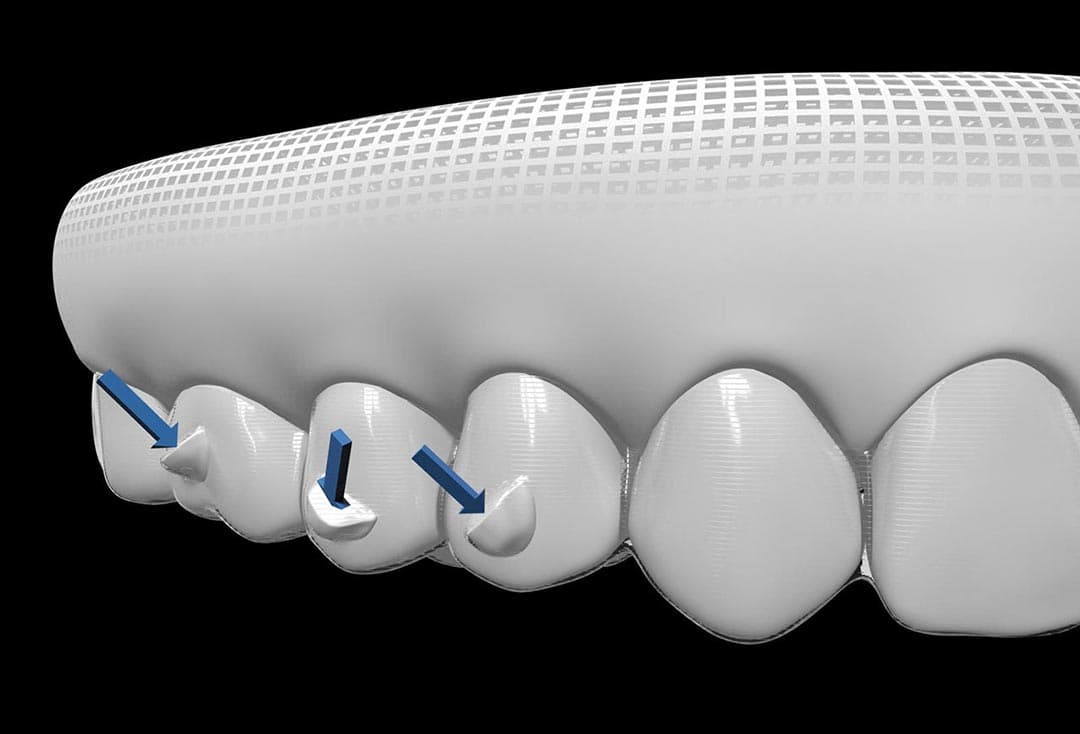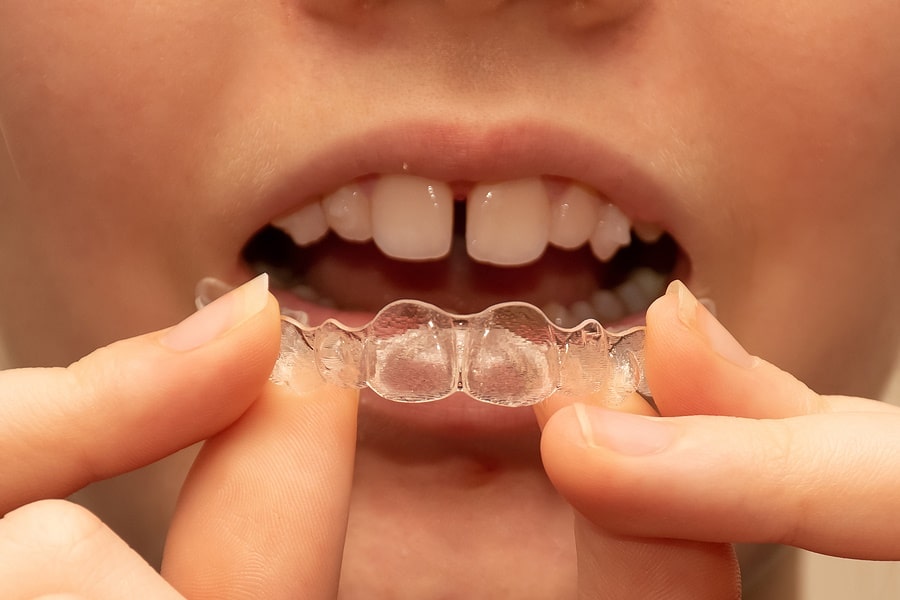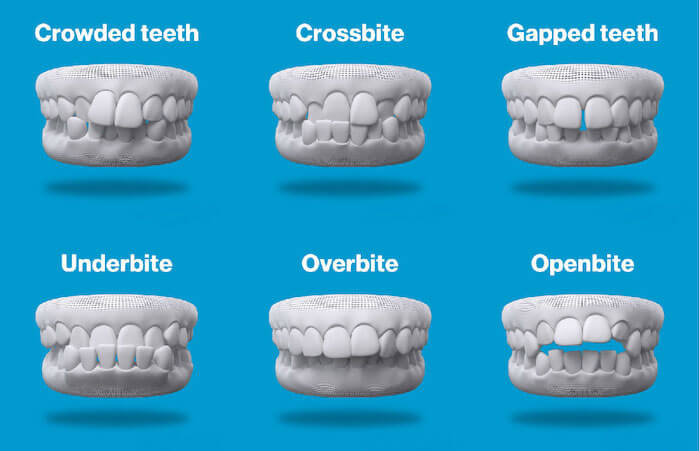Discover the Conveniences of Invisalign for a Perfect Smile Makeover
Discover the Conveniences of Invisalign for a Perfect Smile Makeover
Blog Article
Invisalign vs. Typical Braces: Which Alternative Is Right for You?
When thinking about orthodontic treatment, the option in between Invisalign and typical dental braces provides a number of essential elements that merit cautious evaluation. Invisalign offers a very discreet alternative with removable aligners, while traditional dental braces provide a more noticeable yet efficient service for serious misalignment. Each choice incorporates distinctive advantages and disadvantages related to appearances, comfort, treatment duration, and price. Comprehending these nuances is important for making a notified decision that lines up with your individual choices and lifestyle. The inquiry remains: which choice will best meet your orthodontic demands and assumptions?
Summary of Therapy Choices

On the other hand, standard braces include steel brackets and cables that are bound to the teeth. This technique uses continual pressure in time to accomplish positioning. While effective for complex orthodontic concerns, standard braces require routine gos to for adjustments and can present difficulties in maintaining oral hygiene because of the trouble of cleansing around brackets and cables.
Both options have their qualities, and the choice often depends upon specific dental problems, way of living choices, and individual conformity. Eventually, seeking advice from an orthodontic expert is vital for identifying one of the most ideal therapy strategy tailored to private demands. Recognizing the subtleties of each alternative can dramatically influence the total success of orthodontic treatment.
Visual Factors To Consider
A considerable variable affecting the option between Invisalign and conventional dental braces is the aesthetic allure each treatment supplies. Invisalign aligners are crafted from clear plastic, making them essentially unnoticeable when put on.
In contrast, conventional dental braces include steel brackets and cables, which can be more recognizable. While advancements in orthodontic innovation have actually caused the development of smaller sized brackets and colored elastics, traditional braces still maintain a more obvious profile. For some people, the visibility of braces might deter them from looking for needed treatment.
Eventually, the choice between Invisalign and conventional braces might pivot on individual choices regarding aesthetics. Clients that prioritize discretion frequently lean toward Invisalign, while those that are much less worried about exposure may go with conventional braces. Recognizing the aesthetic ramifications of each option is important for making an informed decision that aligns with one's way of life and choices.
Convenience and Convenience

In terms of convenience, Invisalign aligners are detachable, making it possible for patients to enjoy their preferred foods without constraint and maintain optimum dental hygiene. Cleaning and flossing are simplified, as the aligners can her response be obtained throughout these regimens, whereas typical dental braces require careful maneuvering around brackets and cables.
In comparison, standard braces necessitate regular adjustments, making them much less hassle-free for those with active timetables. On the whole, the convenience and convenience of Invisalign make it an enticing selection for many individuals seeking orthodontic treatment.
Therapy Period and Efficiency
While both Invisalign and conventional dental braces are effective in fixing oral imbalances, the duration of therapy can vary substantially in between both options. Normally, Invisalign therapy can take anywhere from 12 to 18 months, depending on the intricacy of the situation. The clear aligners work by gradually changing teeth into their wanted positions, and routine follow-ups with an orthodontist assistance make sure progression continues to be on track.
On the other hand, traditional braces commonly require a longer commitment, generally ranging from 18 months to three years. This results from their fixed nature and making use of wires and brackets, which can be extra reliable for intricate cases and severe misalignments (Invisalign). The treatment efficiency of typical braces is well-documented, as they permit precise modifications and better control over tooth motion
Ultimately, the selection between Invisalign and traditional dental braces may rest on both the awaited treatment duration and the details dental concerns at hand. Consulting you could try this out with an orthodontist is important, as they can give customized referrals based upon specific requirements, making certain the selected technique straightens with desired timeframes and results.
Expense Contrast and Insurance Choices
Price plays a considerable duty in the decision-making procedure for people taking into consideration orthodontic therapy, whether going with Invisalign or conventional braces. Generally, the price of Invisalign arrays from $3,000 to $8,000, while traditional braces generally cost between $2,000 and $6,000. Elements influencing these costs consist of the complexity of the case, the duration of therapy, and geographical area.
Many dental insurance coverage plans offer partial insurance coverage for orthodontic treatments, yet the specifics can differ widely. Typically, traditional dental braces might be much more regularly covered by insurance policy plans contrasted to Invisalign, which some insurance providers categorize as an aesthetic procedure.
Additionally, a number of orthodontic techniques offer versatile layaway plan, making both treatment alternatives a lot more available. Patients must ask about prospective funding options and discount rates for ahead of time settlements. Examining the overall expense, including insurance benefits and layaway plan, is important for making a notified choice that lines up with both visual preferences and spending plan considerations.

Final Thought
In recap, the option between Invisalign and traditional dental braces rests on multiple variables, including aesthetic choices, comfort, therapy duration, and cost. Invisalign supplies a discreet, detachable choice that promotes dental hygiene and nutritional adaptability, while standard dental braces may be a lot more suitable for complex oral concerns and typically come at a lower price point. Eventually, consultation with an orthodontist is vital to analyze private circumstances and determine the most proper therapy choice for attaining optimal oral positioning.
When thinking about orthodontic therapy, the option in between Invisalign and conventional braces provides a number of essential elements that merit cautious assessment.Contrasting Invisalign and standard braces exposes unique therapy choices for orthodontic adjustment.While both Invisalign and typical braces are effective in correcting oral misalignments, the period of therapy can vary substantially in between the 2 options.Cost plays a substantial role in the decision-making process for people thinking about orthodontic treatment, whether opting for Invisalign or traditional braces.In recap, the choice in between Invisalign and traditional braces hinges on multiple factors, including aesthetic choices, convenience, treatment duration, and price.
Report this page